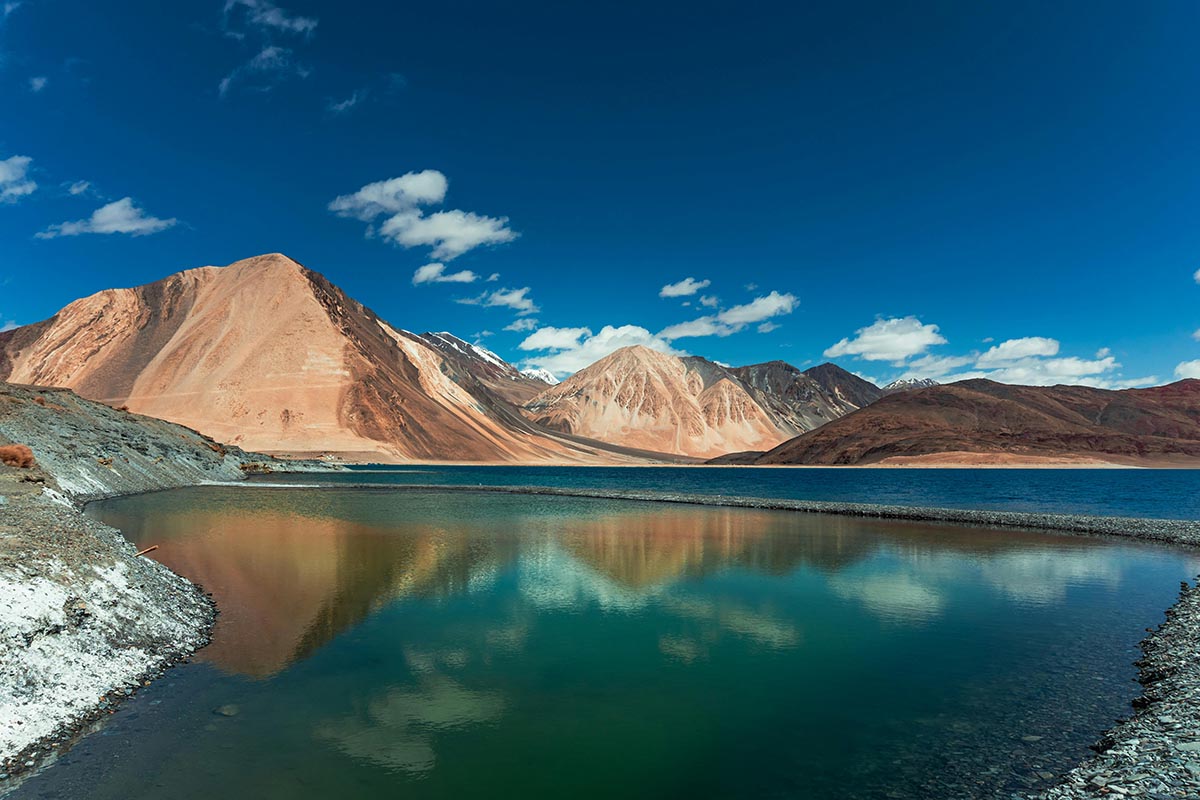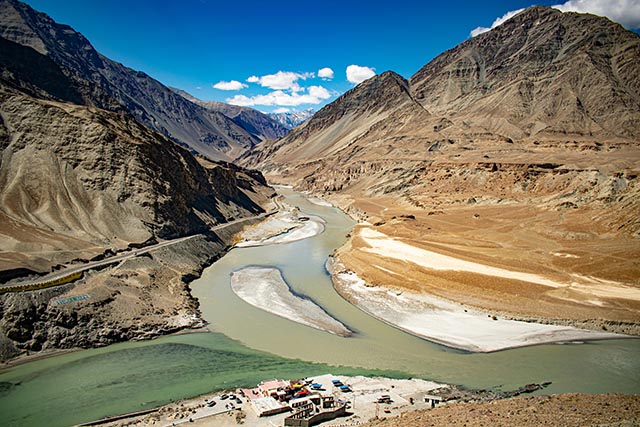
Overview
Located at an elevation of 3,000 meters above sea level, not only can Ladakh have a lot of snow, but it may also become hostile to visitors at times! It is quite difficult to get to the valley once winter sets in because most of the routes to Ladakh close. A dream visits to Ladakh by many who can come and take in the views of the huge, lonely range of hills and valleys. This is one, along with the exhilarating sensation of surviving the severe weather.
While some believe that visiting Ladakh in the summer is the ideal time to go, others enjoy traveling during the bitterly cold winter months. Winters are hard but exhilarating too, in places where summers are wonderful and cozy. There are plenty of festivals and breathtaking scenery to choose from depending on when you come. The optimum time to visit Leh Ladakh is between late April and mid-July when easy access to the area is made possible by the opening of the Srinagar Leh and Leh-Manali highways. There’s also the chance to see the beautiful scenes covered in snow during this time, particularly on the Leh-Manali road. Mid-September to October is another ideal time to come, as Ladakh is at its most picturesque at this period and there are less tourists, so visitors may take advantage of discounts.To experience the winter wonderland of Ladakh one should must consider Ladakh tour packages for their holidays in Ladakh.
But, because of the possibility of landslides, it is best to avoid visiting Leh Ladakh from late July to early August during the monsoon season. Travel is dangerous during this season because the roads, especially the Leh Manali and Srinagar Leh highways, are frequently covered with sludge. But it is accessible throughout the year. Ladakh is renowned for its rough terrain, high passes, and distinctive cultural encounters. But because of its high elevation and harsh weather, the climate and accessibility change throughout the year. Book your Ladakh Tour with Cliffhangers India for the best experience, as they have decades of travel experience.

Summer
The summer season, which begins in April, is when most people travel to Ladakh. Ladakh begins to come alive with tourism activity from this month onwards. Throughout the season, the temperature stays between 7°C – 26°C. Ladakh’s summer season runs from March through June. The sun shines brightly during these months, which makes the entire state of Utah’s weather pleasant for visitors. As April arrives, the snow begins to melt faster as Ladakh prepares for the arrival of summer! As the temperature rises, the area becomes warmer and draws tourists looking to take a Leh Ladakh tour.
The best method to get to Ladakh after April is to take the Srinagar-Leh Highway, which reopens in the second half of May. When the majority of the Ladakh tourist attractions and places to visit become accessible, the area sees a massive influx of visitors. Ladakh is the busiest and most visually stunning place to visit in the summer. Travelers begin to flock to Ladakh in April, eager to take advantage of the last few days of spring. When the important Srinagar-Leh highway reopens in the second week of May, it will be much easier for travelers to travel to Ladakh. Because the peak season has not yet begun and the hotels are offering attractive rates to entice guests, this is the ideal time of year for budget travelers.
Additionally, concurrently, you can. The lakes begin to melt in late April, and vibrant colors begin to appear everywhere. By early June, the Rohtang Pass and Manali route are also accessible. The roads can provide some of the most breathtaking views you have ever seen, even though they can occasionally be slick from the snow melting so quickly.
Monsoon
In Ladakh, the monsoon often starts in August. The Ladakh Valley is characterized by frequent rainfall in most areas, which hinders connectivity. Communication throughout the valley is cut off by waterlogging, and the likelihood of landslides increases to an extreme. Though there are certain places that don’t get very heavy rains, getting in touch with them is difficult! Ladakh receives little rainfall all year round since it is in the Himalayan rain shadow zone. However, it remains cool and ideal for certain adventurous pursuits.
However, the weather in this rain-shadow region also fluctuates periodically. There have previously been sporadic cloud cover or rain in Ladakh as well. However, nothing significant has occurred thus far. Most of Ladakh receives erratic to intense rainfall from the end of July to the middle of September. It is not the best time to visit Ladakh, nor is it the safest. Rain greatly increases the risk of driving and walking on the roadways.
During this time of year, landslides and snow slides also occur often. Roadblocks can frequently occur and impede the progress of the journey or hike. Certain places, such as those that are outside of Zoji La Pass and Baralacha Pass and that are accessible from Srinagar and Manali, respectively, are covered by rain shadow areas. But because of the rain, one must traverse some hazardous crossroads to get there.
Winter
The valley’s temperatures begin to drop in the middle of October and stay that way until January. The region has a sharp decrease in temperature in late October; in Ladakh, freezing temperatures and strong winds are typical occurrences. The region experiences snowfall as the mercury drops further between mid-November and the end of December. The temperature drops sharply and stays that way until the end of December before moving into January and February.
During this time of year, those who are looking for excitement frequently arrange trips to Leh Ladakh and put their reflexes to the test by participating in a variety of adventurous activities! By now several locations are starting to see snowfall and the winds are starting to turn colder. Below-freezing temperatures are experienced anywhere above 14,000 feet. In Ladakh, the temperature fluctuates between -22°C and -7°C. There are very few tourists who stay to suffer the cold after almost all the others have left. The first week of October sees the continuation of traffic on the Srinagar-Leh and Manali-Leh routes, albeit this also greatly relies on the weather.
For the remainder of the winter, Ladakh is unreachable, except for this October week. Air travel is the only means of accessing Ladakh in the winter months. From Delhi to Leh, there is a direct flight available. There are flights that go here indirectly from other Indian cities.
December and January are the winter’s coldest months. And during these months, people come here to take part in snow activities, go on a snow leopard safari, and go on the well-known Chadar Trek in Zanskar Valley. The UT’s internal circuits are accessible year-round, even though Ladakh can only be reached by air. But it’s true that you can encounter obstacles far too frequently due to severe snowfall. November is when the Thiksey and Padum Festival is held, giving visitors the chance to take part in the festivities and sample some of the mouthwatering regional cuisine. Attempt to participate in these festivities if you intend to travel during the winter.
Spring
Ladakh is especially beautiful in the spring when the snow melts and the area comes to life. As the temperature progressively rises, the snow begins to melt, creating verdant valleys and blossoming flowers. Though certain isolated locations might still be unreachable, the roads to Ladakh continually become more accessible.
Photographers and people who want to see the cultural festivities that happen in the spring, such as the Hemis Festival, should go in the spring.
One of the most exquisite and picturesque seasons to visit Ladakh is in the spring. Amazing scenery is created by the blossoming trees and the snow-capped mountains. Matho Monastery hosts the Nagrang Festival every year in March. It heralds the arrival of trance oracles that make prophecies and perform amazing feats.
Conclusion
It’s crucial to remember that, regardless of the season you visit, acclimatization is necessary due to Ladakh’s high altitude. To avoid health problems associated with altitude, it’s imperative to get enough sleep, stay hydrated, and ascend gradually. It is advisable to see a physician before your trip. The ideal time to travel to Ladakh ultimately depends on your tastes, pursuits, and experiences.

